Various Diets
.
Various Veggie Diets
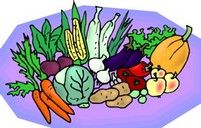
—the lingo and the basics
© 1996 by Nenah Sylver
This article originally appeared in the September-October 1996 issue of Natural Living Today Vol. 1, #10), under the title of "Eating Right: Choose the Perfect Diet For Your Lifestyle." The editor, who did not eat meat, wanted me to focus on eating plans that were either vegan or vegetarian. For this reason, there is little mention of the need for many people to include some form of animal flesh in their diet. Nevertheless, I have included this essay on my website because it provides a brief introduction to various vegetable-based diets.
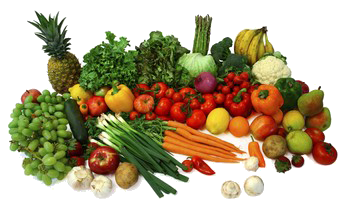
Introduction
Ask the average person what a diet is, and she’ll wrinkle up her nose at the thought of starving and counting—be it calories, ounces of protein or grams of fat. But what if you were told that a diet means not deprivation and starvation, but innovation and enervation?
Of the many types of diets, four will be described. Keep in mind that just as there is never one correct color to wear always, there is never one optimal diet to follow. People have different body types, metabolisms and nutritional needs. Your tofu might be another woman’s baked potato. And the same person may find that what works for her at one point in her life will need to be changed to another plan sometime else. Flexibility is the key; needs change. Learn to listen to your body to determine what suits your needs now. There are many ways to enjoy a healthful diet.

Organic
In the beginning, before pesticides and herbicides, all the Earth's bounty was organic. The trees that grew next to the raspberry bushes dropped their leaves in the fall, and those leaves, instead of being raked and burned, decomposed to become the food for the bushes from which our ancestors ate the following summer. Earth had organic gardening down to a T. Nothing was ever wasted. Any fruit, nut or seed that fell to the ground, even if it was not eaten by an animal or human, always became food for another plant.
In this hi-tech age, we humans are finally learning that sometimes, the most simple method can also be the most elegant and effective. And the tastiest. Organic foods—grown on soils that for at least five years have been tested free of pesticides, herbicides, chemical fertilizers and other contaminants—have higher nutrient content than their factory-farmed cousins. There is a good reason for this. Any plant that is strong enough to protect itself from buggy predators and other pests has got to have a strong, optimally-functioning immune system. A stronger immune system means that all the nutrients that make up a plant’s chemistry are in perfect balance. The payoff is not only a stronger plant, but it a tastier one too. (We ordinarily don’t think of plants having an immune system, but they do. That white or green liquid that oozes out when you break off a stem, or the amber-colored sap from sugar maples, which we call maple syrup, is from the plant’s circulatory system, and functions in much the same way as human blood.)
The soil that is the plant’s home must not only be free of contaminants, it must contain adequate levels of all the nutrients the plant needs. That berry bush mentioned earlier got what it needed from the mulch that was created from the tree’s dropped leaves. But factory farms, where each crop is grown in huge plots and isolated from other crops, do not contain the variety of growing vegetation that would ordinary replenish the soil. That is why farmers who grow organic rotate their crops. Alfalfa, for example, will replace the nitrogen in the soil that the corn depletes. Some organic growers plant different crops right next to each other. After all, what is a weed? Simply a flower or other green growing thing in the "wrong" place. But to an organic farmer, a "weed" (as well as earthworms) might be just what is needed to keep the soil alive and healthy with wonderful microorganisms. Hence the second law of organic farming: Give the plant everything it needs, and it will give us everything we need.
Anyone who regularly consumes organic food knows what a joy it is simply to eat. The flavor and energy from organic food is unmatched. Carrots and acorn squashes are amazingly sweet, tomatoes are mellow and flavorful, and plain old vegetables that seemed boring and tired when you purchased them at the supermarket suddenly come alive when you bite into their organic versions.
Eating organic is so—well, organic. The health benefits are unsurpassed, as is the taste. Whether you choose to steam the vegetables or eat them raw, whether tonight’s meal is Italian or Indian, and should you decide to follow one of the diets listed below or your own intuition, you can’t go wrong with organic.
***Resource: Organic Food & Farming, from Natural Food Associates, P.O. Box 210, Atlanta, Texas 75551. Tel: (214) 796-3612***
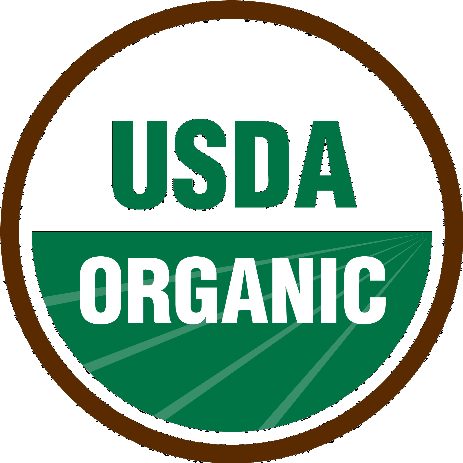

Macrobiotics
Before there were planes and fast freighters to ship mangoes and pineapples to gourmands living in Alaska, people ate what grew locally. Their vegetables were seasonal. Although people did can and freeze some of their produce, what they ate was circumscribed by the cycles of nature. If you lived in North America, during the winter you ate root vegetables. In the spring you could start eating green things. Summer produced the most abundance, including a variety of fruits. And autumn’s menu was similarly varied.

There is sound logic behind eating seasonally, and eating only those plants that are indigenous to one’s region. Just as dark-skinned African people have more melanin pigment in their skin than light-skinned people to protect them from the equatorial sun, a plant belongs just where it is because it has developed the ability to adapt to the region in which it is growing. It is able to extract nutrients from the soil, and is equipped to endure the weather of the region. That raspberry bush growing in North America, for example, with its sturdy bark, is suited to survive winter frosts. The soft stalk of a Brazilian banana bush, however, would not last a minute in snow. Each living organism has a specific place in the cycle of Nature, and each plant contains the sky, sun, water and wind of its particular region.
Thus, the plants that adapt to the region in which you are living are the best suited to nourish and protect you.
It is from this natural order that the system of macrobiotics developed and expanded. George Ohsawa, Lima Ohsawa, Michio Kushi and Aveline Kushi are credited with bringing this system to the United States from Japan. With a strong foundation in Oriental healing philosophy (which also birthed acupuncture), eating macrobiotically means balancing the forces of Yin and Yang, or contraction and expansion. Other balancing factors are warmth and coolness, the moist and the dry. Macrobiotics adherents avoid red meat and poultry, which are considered too yang, and alcohol, sugar, refined (de-Natured) flours, and processed foods, which are too yin. They do, however, eat fish, as fish contains essential fatty acids and are not as far on the "yang" spectrum as red meats and poultry are. Fruits and vegetables are eaten cooked and sometimes raw. (Cooking brings more yang fire to the natural yin sweetness of fruits.) Fermented foods such as soy sauce and miso, which augment the amount of digestion-enhancing enzymes, are enthusiastically consumed. Advocates try to live in harmony and balance with the Earth. To this end, there are specific ways of cooking, combining, and even slicing and cutting their food. As with Oriental medicine, in macrobiotics, the way plants grow literally corresponds to the ebb and flow in the systems of human beings—in fact, to all of life. When following this flow, many people have been healed of numerous diseases, from cancer to toxemia.
When most people think of macrobiotics, brown rice and beans come to mind. However, for the Inuit of Alaska, who can’t grow rice or beans underneath the ice floes, seal meat is perfect for them. Ultimately, macrobiotics is not a rigid collection of "dos" and "don’ts," but a way of harmonizing best with Nature. As long as you remember to eat what grows in your region, and if possible to eat organically, you will be following the essence of this Divine plan.
***Resource: Edward and Wendy Esko. Macrobiotic Cooking for Everyone (New York: Harper and Row, 1980)***

Vegan
Everybody knows that vegetarians don’t eat meat. A vegan diet might be regarded as vegetarianism without the frills of animal by-products. A vegan diet typically consists of vegetables, fruits, whole grains, legumes (peas and beans), and nuts, but without any dairy products or eggs.
Some vegans avoid eggs and dairy products for ethical reasons. Even though no living animal is being consumed with the ingestion of dairy products and eggs, many vegans feel that because these substances are so intimately related to the animal’s life cycle and come directly from animals, they should be avoided. Naturally, the omission of dairy also means no cheese, yogurt, sour cream or ice cream.
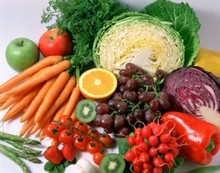
Another reason for a vegan to avoid eggs and dairy pertains to health. A vegan diet works well for people with tendencies toward allergies, whose bodies produce lots of mucous. Because dairy and even eggs can often cause mucous in sensitive individuals, a vegan diet can help take the burden off one’s over-stressed immune and digestive systems and give the person time to restore the body’s homeostasis.
A vegan diet, though simplified in the amount of ingredients one might use for a meal, is far from dull or simple. Delicious meals can be made if the ingredients are fresh, and especially if they are fresh and organic: pasta with spicy sauces; carrots, zucchini and peppers rubbed in virgin olive oil and oven roasted; soup made from puree of carrots and winter squash spiced with cinnamon and cardamon. The gustatory delights are limited only by one’s imagination. There are many excellent vegan cookbooks to help you plan your meals, and even vegetarian recipes can be modified to vegan if you follow several simple rules of substitution. First, nut milk is a good substitute for cow or goat milk. Next, for foods that require a flavor less strong than olive oil, coconut oil can always replace butter. Or, for baking, some people avoid oil entirely with the use of applesauce, concentrated fruits and/or fruit juice, which add a nice flavor and sweetness to the dessert. Finally, what to do about a replacement for those eggs in your cake or muffins, which are used to bind the ingredients together in baking? Flax seeds. In your coffee/spice grinder, pulverize the flax seeds to a powder and use about one-eighth to a scant one-quarter of a teaspoon (that’s all, trust me on this) for each egg that you omit. You’ll be amazed at how well it works.
On the clothing front, in keeping with the vegan philosophy, many adherents do not wear leather. Fortunately, the twentieth century has given us a wonderful invention called sneakers, and for special occasions, one can find dressy and comfortable shoes that do not contain leather. The same goes for pocketbooks.
***Resource: Nava Atlas. Vegetarian Celebrations: Menus for Holidays and Other Festive Occasions (Boston: Little, Brown and Company, 1990); and Madhur Jaffrey. World of the East Vegetarian Cooking (New York: Alfred A. Knopf, 1981). The wonderful recipes in these books cover dishes from India, the Middle East, the Orient, Eastern Europe (Jewish) and the Pennsylvania Dutch region. Those recipes that are not vegan can easily be amended with substitutions.

Living Foods
The name of this diet might sound too obvious, since all of the foods we eat were once living, but adherents of this system mean "Living until the point at which it enters your mouth—and even then, it’s alive in your stomach."
One thing that distinguishes a living system from a non-living one is the presence of enzymes. Enzymes are the organic substances in a plant or animal cell that catalyze a chemical reaction. Let’s say you just ate a plateful of pasta smothered in garlic and olive oil. That oil, even if it’s the best extra-green virgin, will just sit in your stomach unless your body produces lipase, which is the enzyme that helps digest fats. it’s lipase that gives fats a chemical push to break down into smaller, more digestible particles of other materials so that our cells can use them for nourishment. What happens when there are no enzymes? There’s no life. And what if the person has few or no digestive enzymes? The food becomes useless. Because cooking so dramatically alters the natural state of the foods, the body has to work harder to process them into a useable state. And the person gets indigestion (from undigested food), with all its attendant symptoms: bloating, diarrhea, constipation, fatigue, toxic headaches.
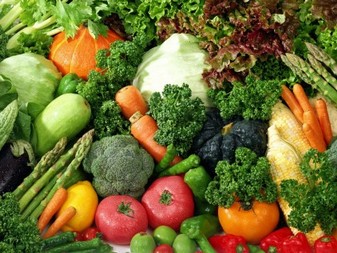
The good news is that everyone can have a properly functioning digestive system. The best way is to ingest enzyme-rich living foods from the start so that digestion will be effortless. With living foods, you not only preserve all the vital nutrition, you save considerably on your gas and electric bill—and there are no greasy pots to clean!
Those who are used to cooking food might be at a loss to think what a tasty, well-balanced living foods meal might look like. But here are just a few of the many dishes you can prepare: walnut loaf with a topping made from sun-dried tomatoes, fresh garden salad with aduki bean sprouts and avocado-cucumber dressing, sprouted wheat muffins with sunflower seed "cheese," and dates and apricots with sweet coconut cream for dessert. Are these dishes difficult to make? No. It just takes a little practice, a few good "non-cookbooks," and for the more elaborate dishes, a food processor and the ever-dependable blender.
Not all living foods are totally raw. Because some foods can be exposed to varying amounts of heat before their enzymes become broken down, some living foods preparers use a food drier to make sliced carrots, strawberries and bananas. And a very good, still-living pie crust can be made from sprouted wheat berries placed in a warm oven.
It is easy to see who would benefit from such a diet. The staff at the Hippocrates Institute in Boston, which specializes in helping people restore their bodies to a naturally high state of functioning, says they have helped people with hardening of the arteries, arthritis and emphysema. Even if you do not have a major ailment you wish to eliminate, eating some living foods in your diet every day makes good sense. After all, your hard-working digestive system needs all the help it can get.
***Resources: Viktoras Kulvinskas. Love Your Body: live food recipes (Fairfield, Iowa: 21st Century Publications, 1972); and Ann Wigmore. Recipes for Total Health and Youth (Boston: Ann Wigmore Press, 1990)***

Other good books: Annemarie Colbin. Food and Healing (New York: Ballantine Books, 1986) and The Book of Whole Meals (New York: Ballantine Books, 1983).
Also, my favorite cookbook Nourishing Traditions: The Cookbook that Challenges Politically Correct Nutrition and the Diet Dictocrats by Sally Fallon and Mary G. Enig (ProMotion Publishing, 3368 F Governor Drive, Suite 144, San Diego, California 92122; 2001)

Eating to live, not living to eat. One potential hazard of a strictly vegetarian diet is the overuse of carbohydrates, especially refined carbs. In the past, I have known many vegetarians who didn't eat meat and instead of supplementing their diet with high-quality vegetables, fermented veggies, pastured eggs and raw dairy, loaded up on breads, pastries, sweets, and excessive amounts of fruit. This took a toll not only on them, but later, on their children. I noticed that parents with a poor diet gave birth to children who were plagued by more than their share of allergies, including immune malfunction—they tended to get sick a lot. I do concede to knowing some people who are successful vegans, and I would never think of arguing with someone's experience. We are all unique, and everyone has different nutritional requirements. However, my personal experience, observations, research and intuition tell me that not everyone can follow a vegetarian or vegan diet and remain healthy. What you eat and how well you feel on a given food plan depend on a lot of things: constitution, health history, environment, stress levels, and more.
Telling you sweetly (I hope). In my book, The Rife Handbook of Frequency Therapy and Holistic Health, I devote considerable space to Food because it's true that "You are what you eat"—and that "You are what what you eat, ate." This Food section also extensively discusses the often problematic topic of sweeteners—including that category of non-food, artificial sweeteners. The Sweeteners portion of the Food section, which includes interesting data on agave, honey, maple syrup, fructose, corn syrup and molasses, is much too long to excerpt here. However, I do want to mention that instead of sugar (sucrose, fructose or any of the other sugars ending in "-ose"), you can use cinnamon, cloves and other sweet-tasting spices, as well as powdered green leaf stevia. The Rife Handbook includes a recipe for a wonderful warming drink that contains no sugars whatsoever—and whose spices are even known for balancing blood sugar levels!








